Relaxed we watched the colourful activities on the central square in front of Queen’s Palace in Jaisalmer Fort. The coming and going slowly changed into a status quo which meant that no fresh traveler groups arrived. The Jain temples are open for the general public until noon, and afterwards belong to the pilgrims only. The latter do not like too much to be in the focus of tourist attention. They prefer to celebrate their devotion not under the eyes of the general public. Understandable.

Former Queen’s Palace in Jaisalmer Fort, nowadays museum
Even the grey clouds seemed to have lost heaviness, now being replaced by light clouds. Invigorated we started thinking what to visit in the afternoon. The manager of the restaurant “8th of July”, Jag’s wife Rama, joined us and enjoyed our praise of the meal. Looking at the facades in front reminded us to the houses of rich merchants called Havelis for which Jaisalmer got nearly as famous as for its Jain Temples in the Fort. There was no motor Riksha in sight on the square, but Rama’s energetic whistle startled one of the drivers standing at the edge of the square. The motor Rikshas were parked in the shadow of the big tree. Very reasonable against the blazing sun. We agreed upon a fare including waiting time during our sightseeing and off we went. Rumbling we drove through the historic centre and wondered how motor Riksha and oncoming cows or sheep or goats came around on the stone covered drains. When the driver stopped we were happy enough not to have touched the roof of the motor Riksha with our heads. Certainly it was sometimes just under. The driver smiled innocently and pointed on a building on our left.
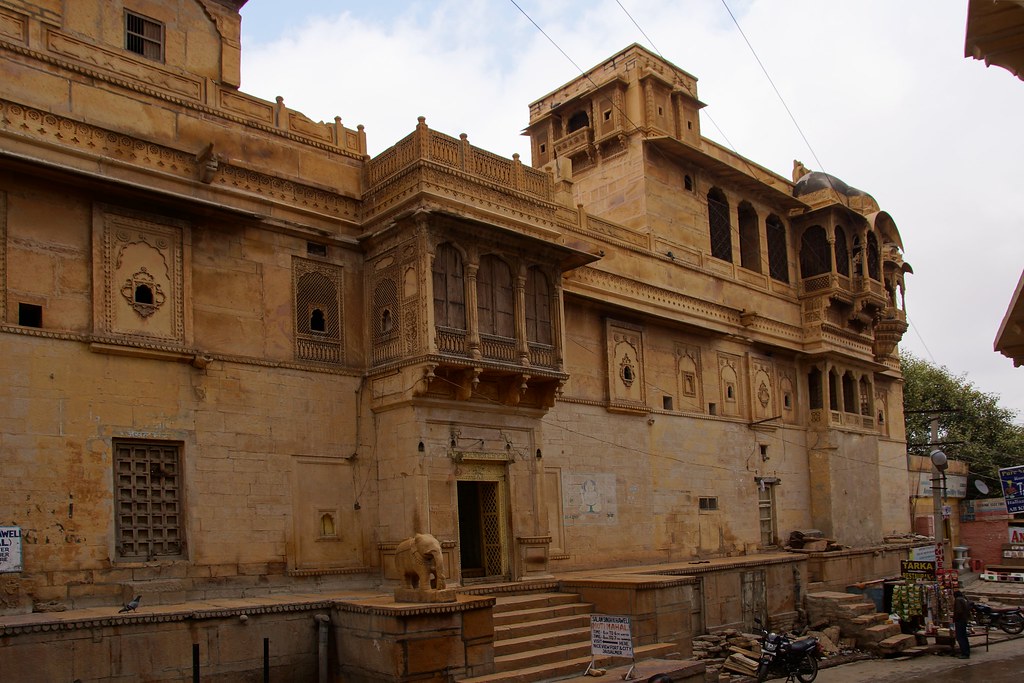
Entry of Salamsingh Haveli, built in 1815
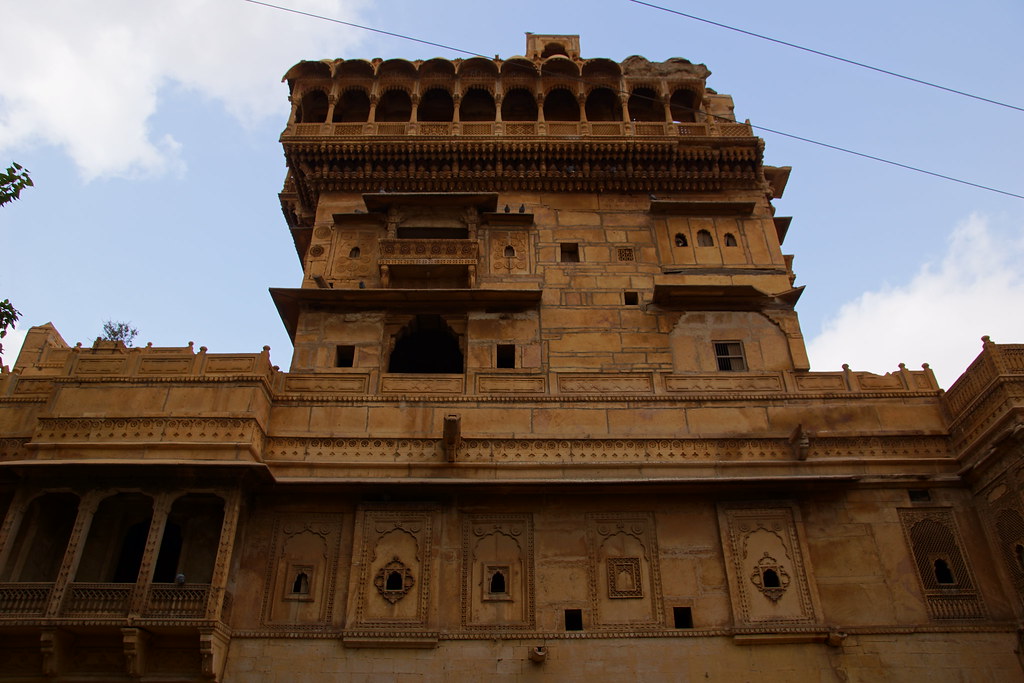
Rooftop arch on Salamsingh Haveli

Look-out on rooftop arch, seen from side

Front view of rooftop arch, thereunder a sandstone balcony with artful stonemasonry
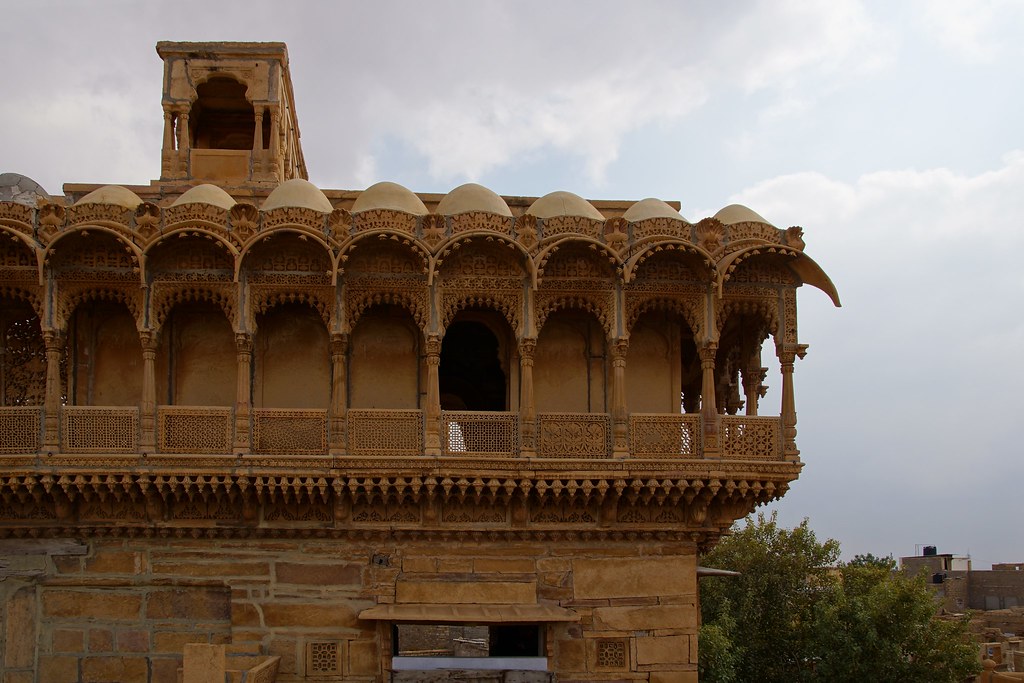
Details of rooftop arch with look-out, side view
Construction of Salamsingh Haveli had been ordered by a Jaisalmer Prime Minister about 200 years ago. Even nowadays the property is run by the descendants of Prime Minister Salam Singh. Unfortunately it is not in the best of its conditions and gave a rather decrepit impression, but this is not so concerning statics. The airy rooftop arch on top of the mansion appeared like a summer residence on the minister’s actual residence. From the look-out on top of the rooftop arch it is possible to have a broad outlook to the desert. For a minister working with caravans it was a clear advantage to dispose of reliable informations on the arrival of the latter.
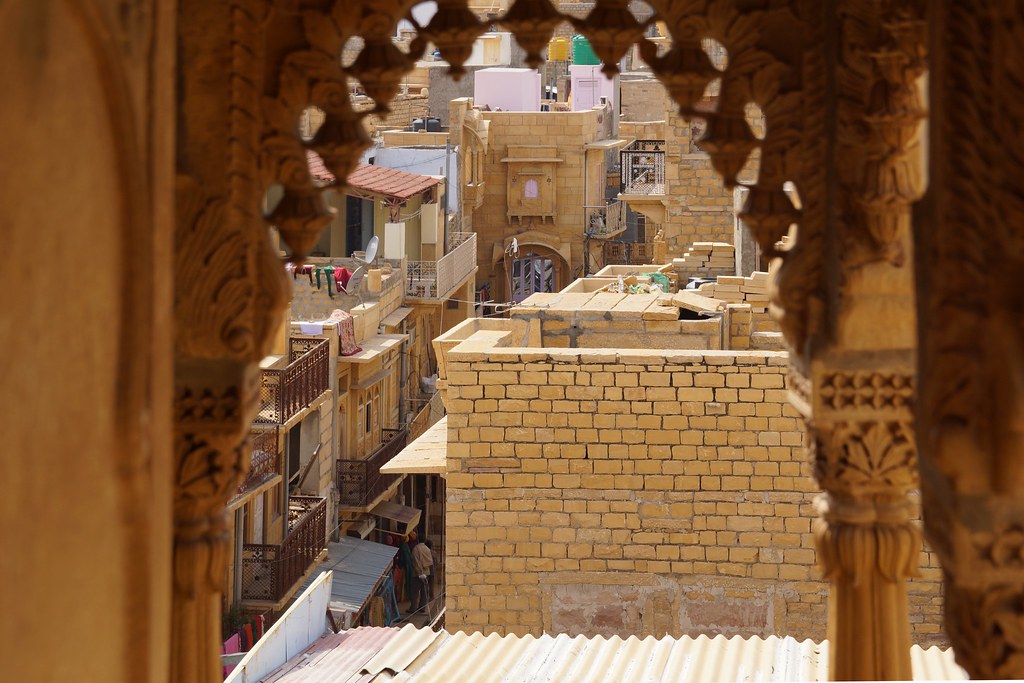
Streetview from Salamsingh Haveli

View from the balcony under the rooftop arch to Jaisalmer Fort

In one of the historic cavities souvenirs are sold
To visit Salamsingh Haveli with its narrow staircases and large stone steps provides awareness on the physical labour one has to accomplish before reaching the rooftop arch. Therefore a minimum of fitness is required, as after all one has to climb 4 floors. The marvelous view on the Fort and the winding alleyways of the old town is really worth it. We just were on our limits after the climbing and the taking of pictures.
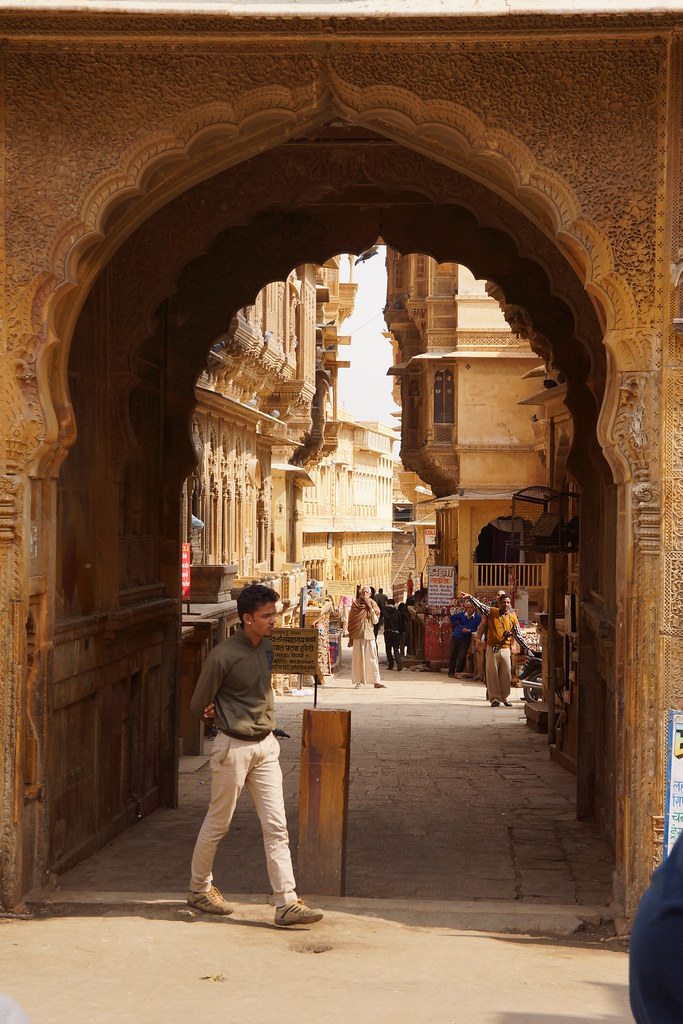
Entry to the mansion consisting of 5 buildings: Patwa Havelis
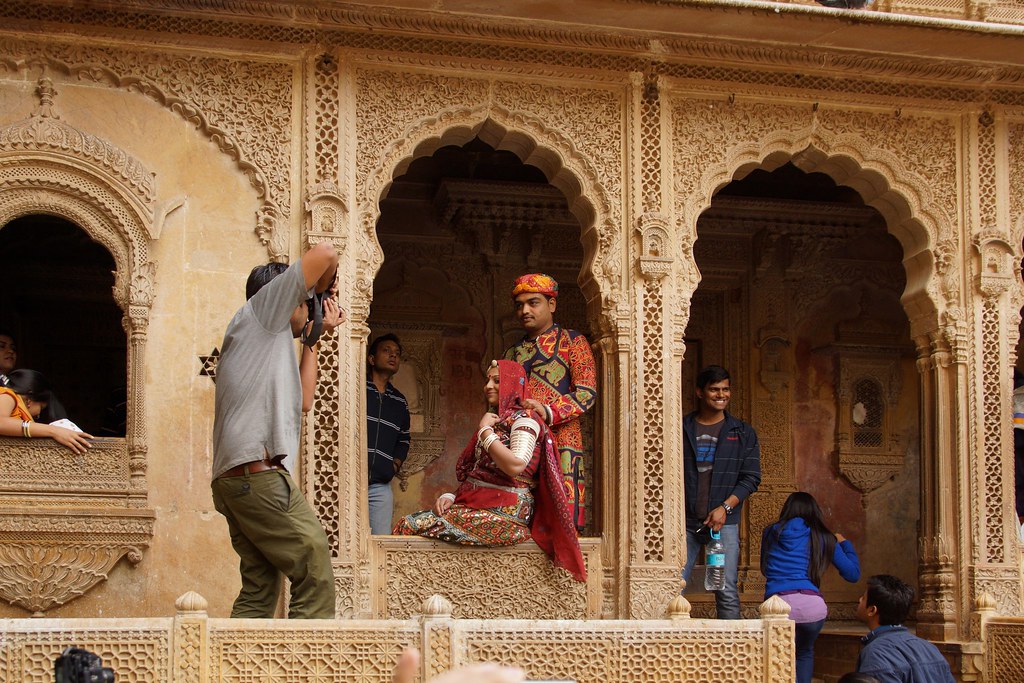
Photo shooting for tourist advertisement at Patwa Haveli
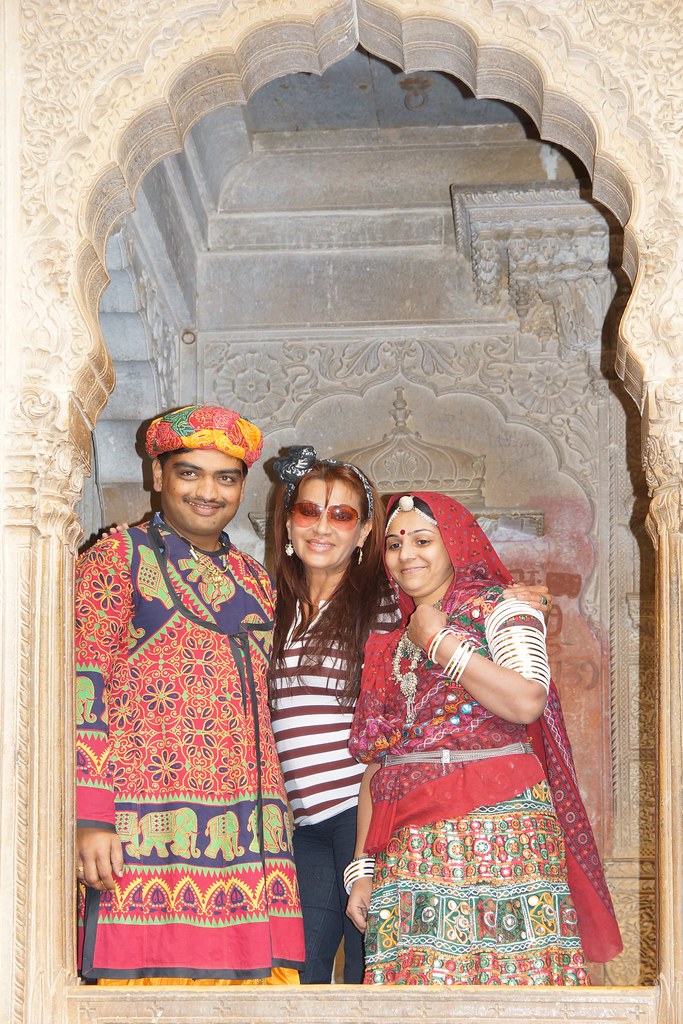
Like in catalogue
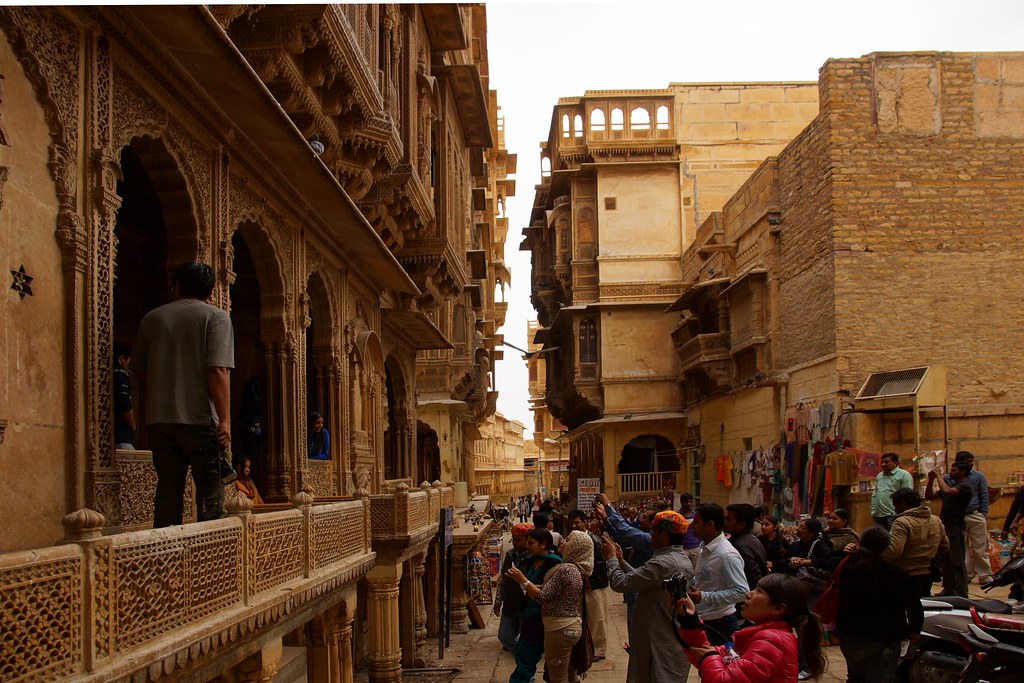
Enthousiasm among bystanders
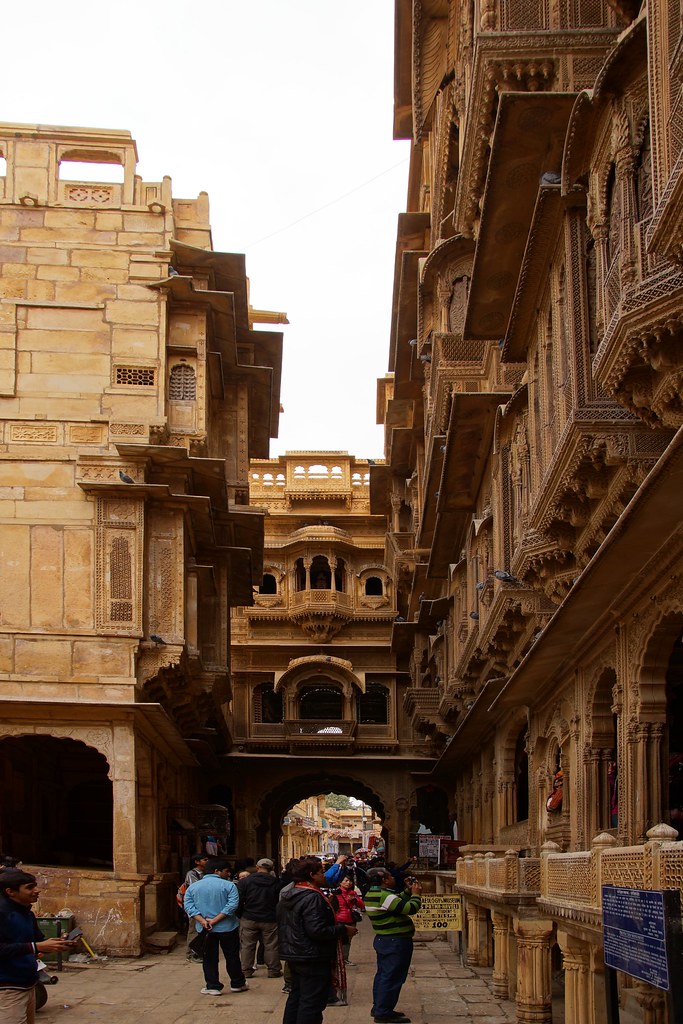
Complete mansion Patma Haveli
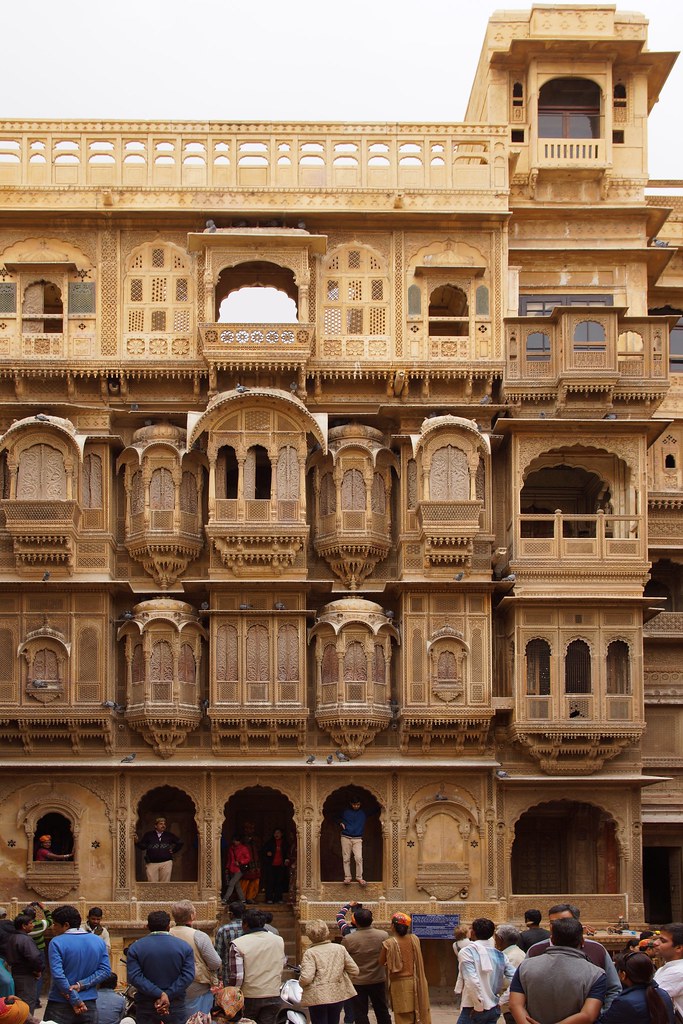
Entry of the museum
To a certain extend Patwa Haveli is the most beautiful and best maintained mansion. The five Havelis were built for his five sons between 1800 and 1860 by a rich merchant named Patwa. The Patwa clan belonged to the financers of the Bhati Rajput ruler clan of Jaisalmer and also donated many sculptures for the Jain Temples in the Fort. Nowadays a great part of Patwa Haveli is open to the public and houses a museum and a commercial settlement for folkloristic Rajasthani souvenir. Museum and commercial settlement are in private hands and in good condition. A Jain native from Jaisalmer named Kothari acquired parts of the Haveli from the Patwa clan out of sheer sentimentality for his hometown and invested in its present use. Another part of the mansion is owned by the Rajasthani government and not open to public. This part increasingly decays and is apparently offered to decline. When we arrived there was a photo session in the museum part of the mansion with models in folkloristic garments. Tourism and its suppliers are the only employer of the region. Most of the Jain families have left Jaisalmer quite some time ago.
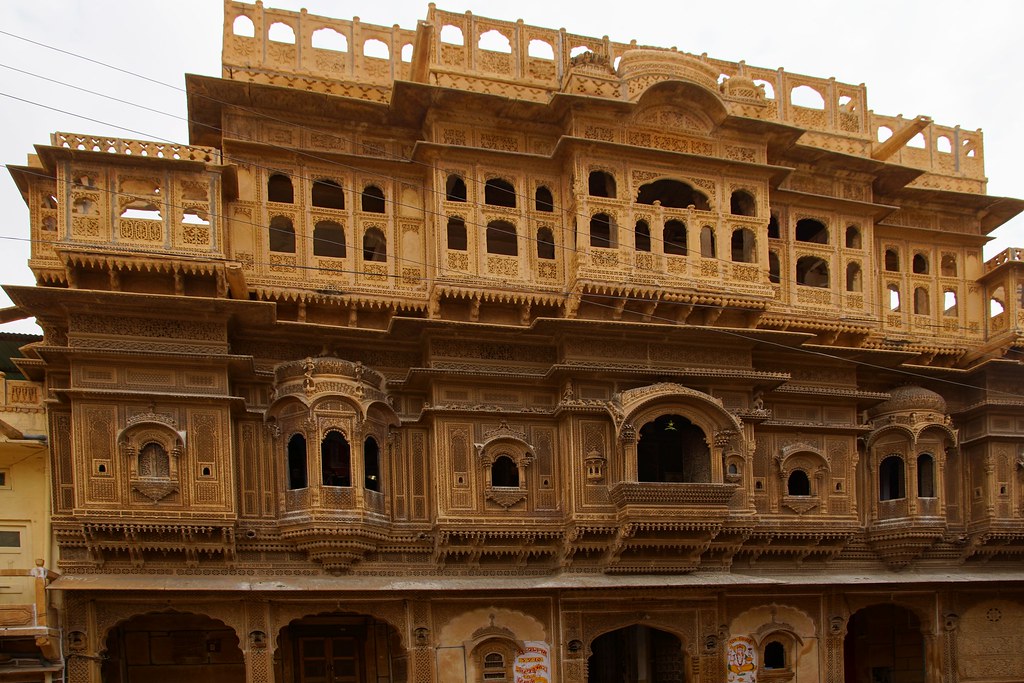
Nathmal Ki Haveli, middle of 19th century
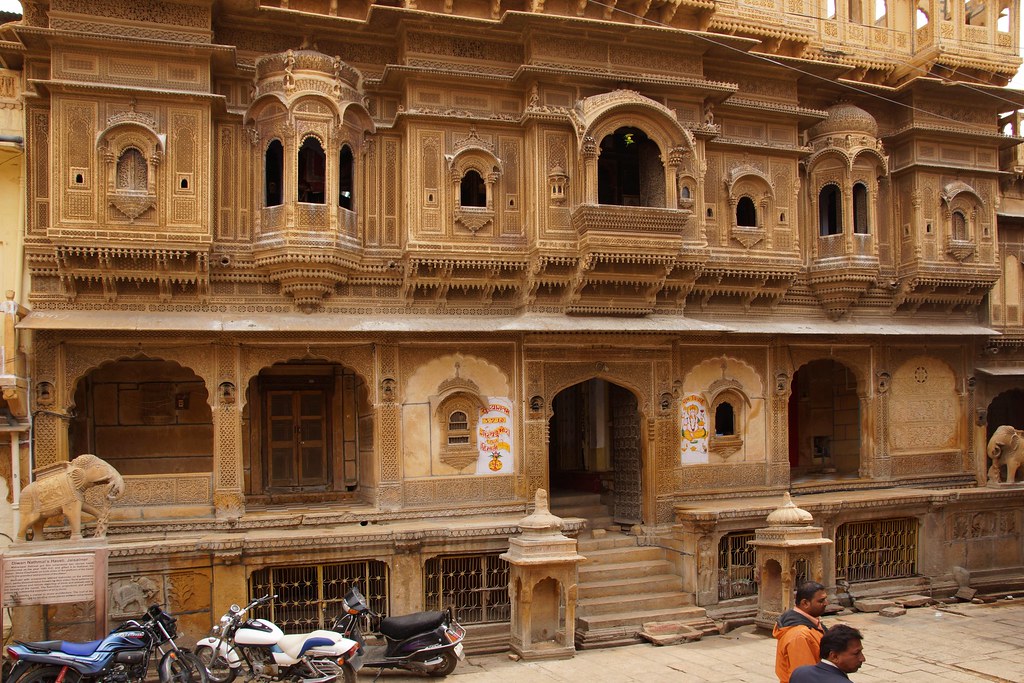
Nathmal Ki Haveli was owned by a former Prime Minister of Jaisalmer and his brother who was a merchant
Nathmal Ki Haveli was built by two competing brothers, one of them a Jaisalmer Prime Minister at the time. Both parts of the building are alike, but not identical. The middle entry is open to public and gives way to the inner court accessible from both sides. Even now both parts of the mansion are in the hands of the descendants. The proprietor of the right side opened his house to the public and trades with high class souvenirs. There is no entry fee. Partially the building is decrepit.
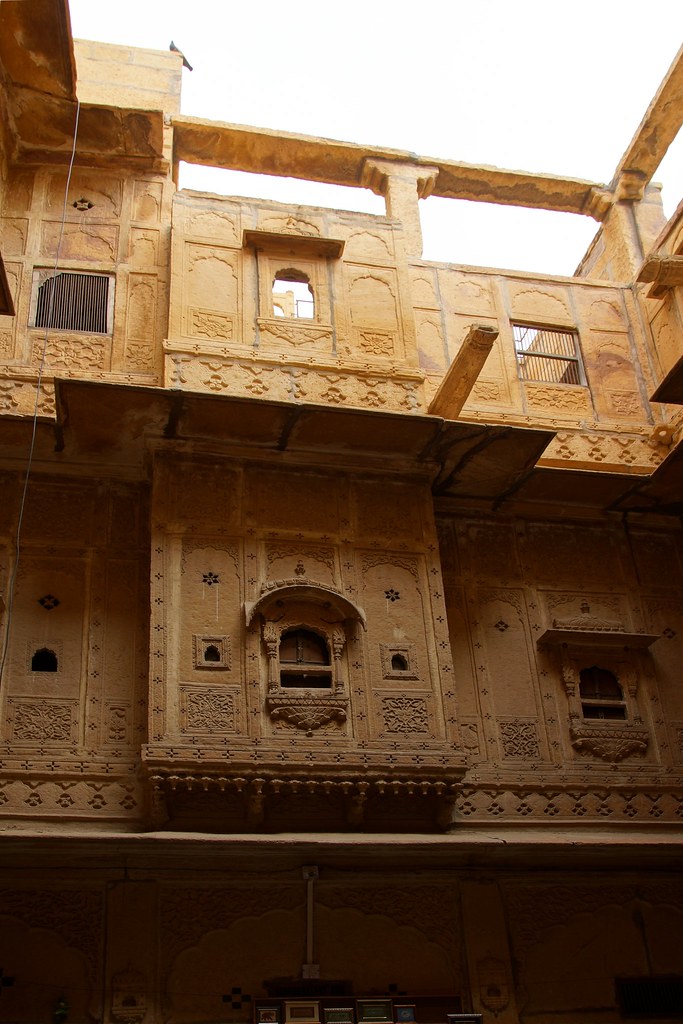
Dilapidated part of the inner courtyard

Open for visits: Part of the inner courtyard

Decorated ceiling & walls in the souvenir shop
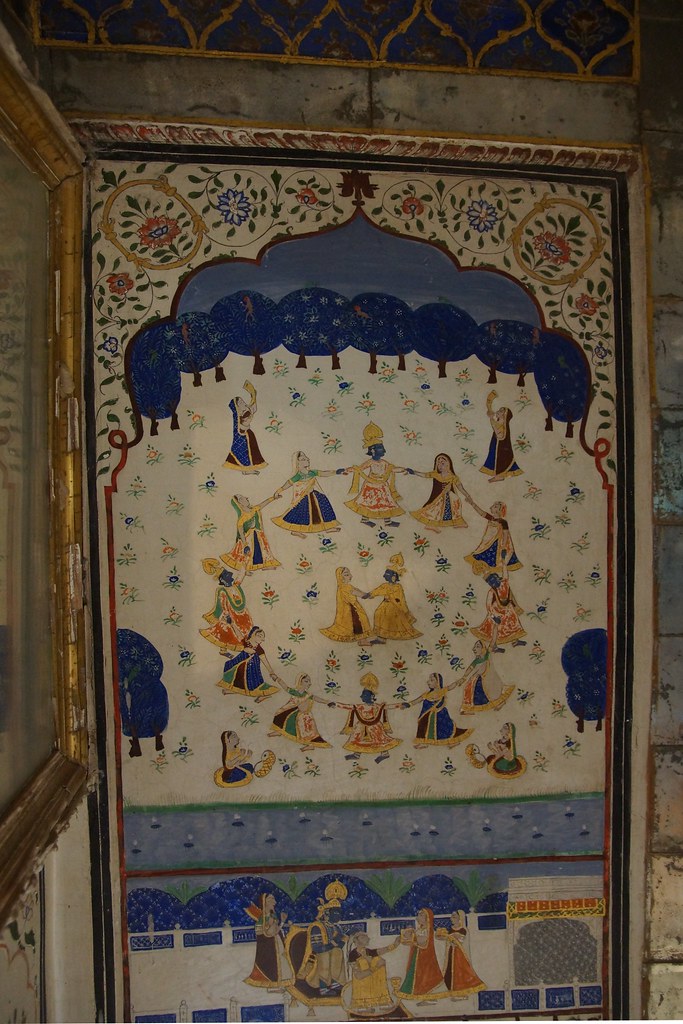
Well preserved mural
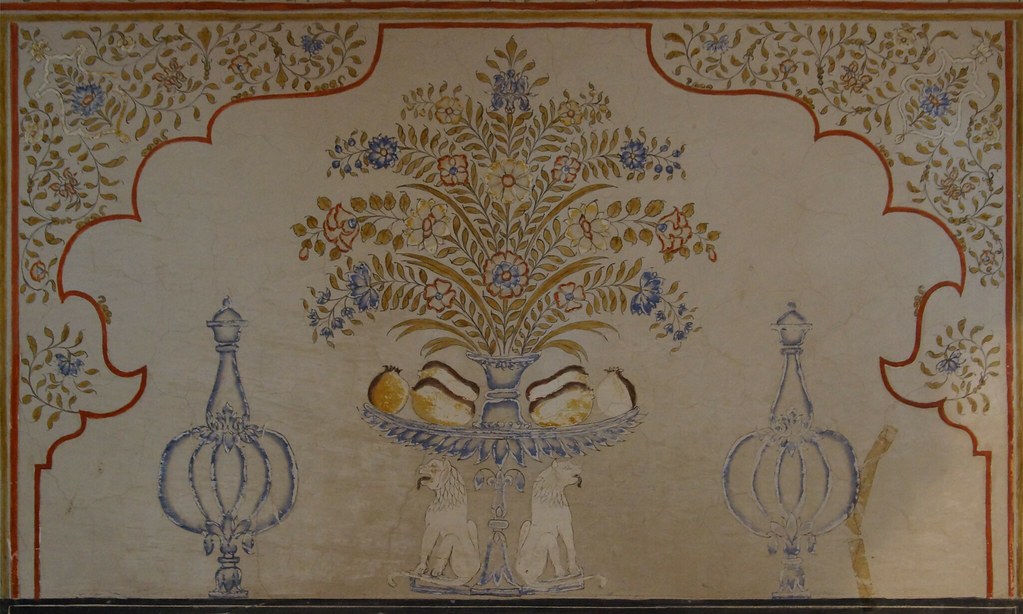
Hand-made paintings instead of printed wallpaper
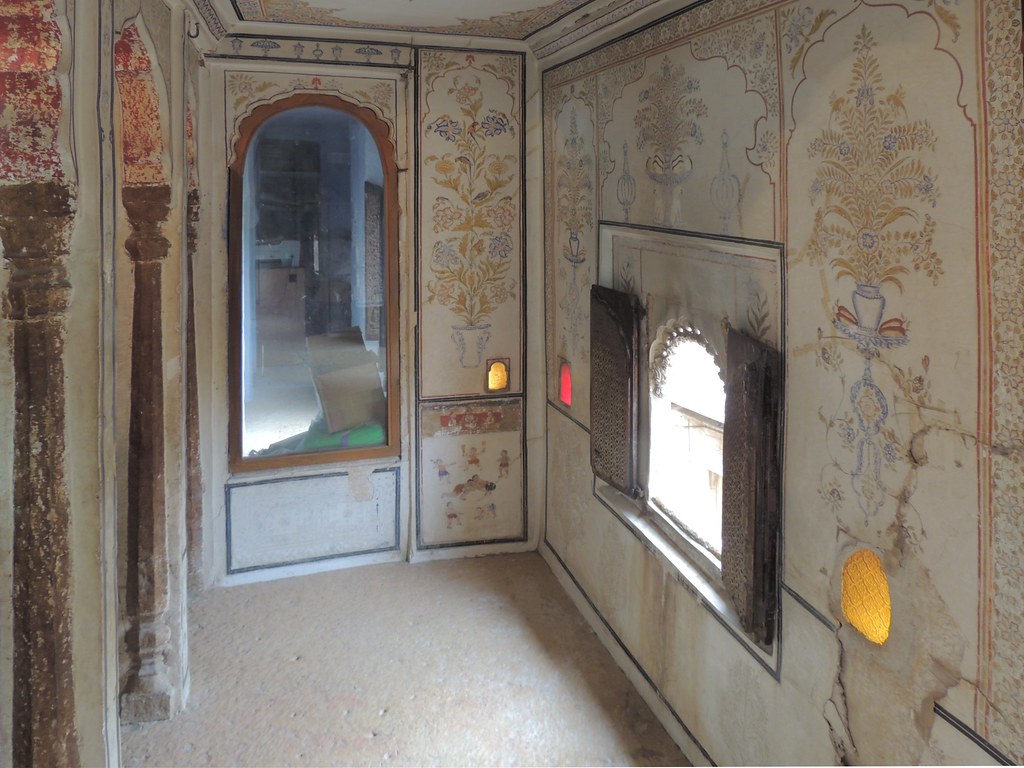
Airy gazebo
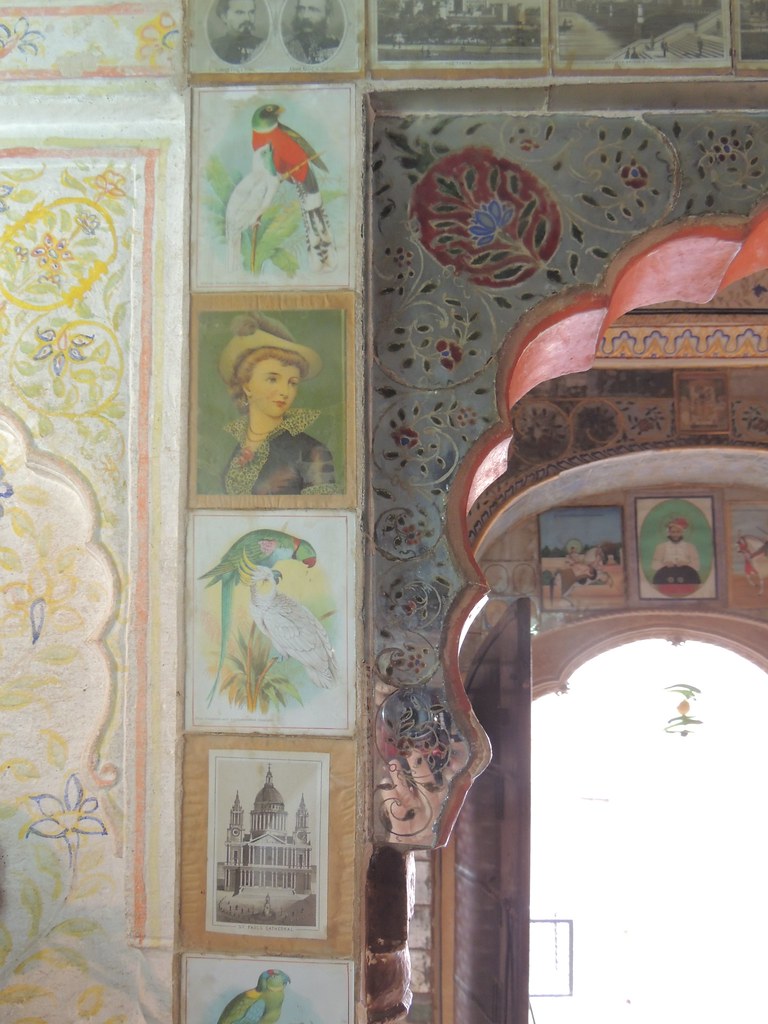
Decorated door case

Good friends of his ancestor according to his descendant: King Ludwig II. of Bavaria (l), King Albert of Saxonia
The kind owner of the souvenir shop turned out to be the descendant of one of the owners. After learning that we came from Germany he offered to be our special guide for this Haveli tour. He provided detailed insights into the technique of painting and mixing of colours for residential properties. Finally he presented the photos of his ancestor’s good friends to us: Two kings from Germany! There were commercial relations and even some private corresponding.
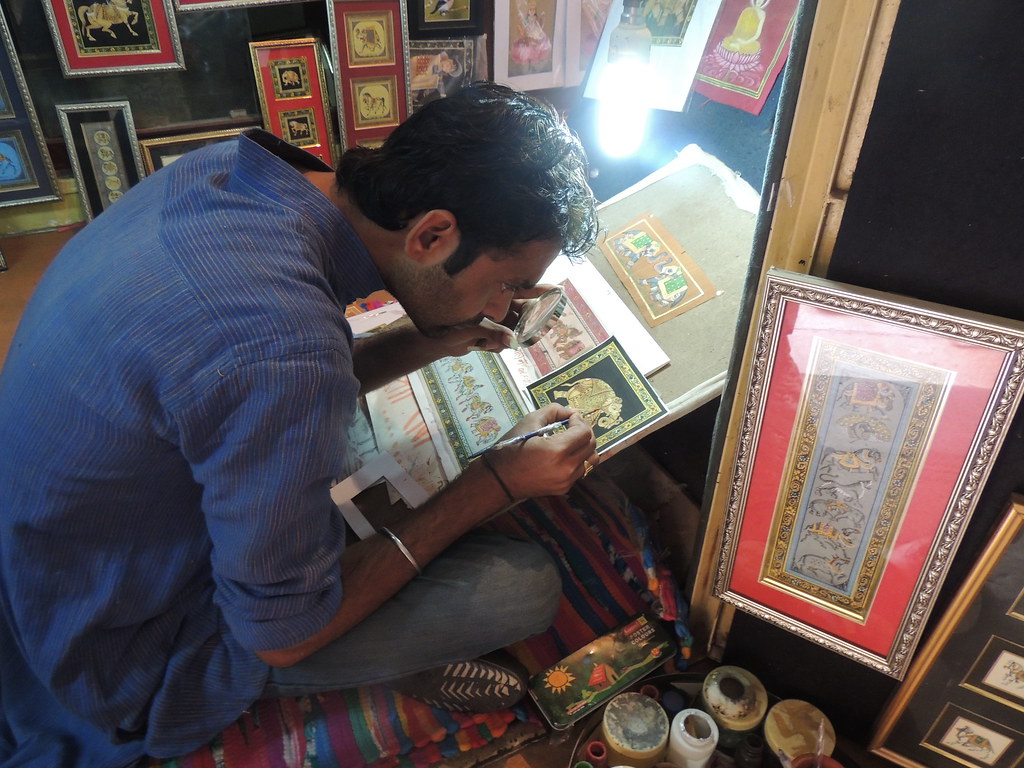
The paintings with traditional Rajasthani motives offered for sale in Nathmal Ki Haveli are all handmade. Visitors may look over the shoulder of the artist.

Another Haveli: Hotel Australia Blue International
When we reached our hotel after the tour, our now trained eyes perceived that our hotel is also a Haveli. So we inquired Jag the proprietor about the matter. He told us that over years he together with skilled regional manufacturers (paid) and friends (not paid) had done the restoration of the building in troublesome handwork. This year only the necessary installations for facilities and stonework were brought so far that for the first time he was able to let some of the rooms, but yet not all. The hotel has an own generator which we highly esteemed the eve when it was raining, as we saw the hotels on the other side of the road lying about two hours in the dark, no electricity. Maybe caused by the rain. The facilities are western standard, and everything is neat and clean. Even bed linen and towels. When Jag was a teenager, there were only 2500 inhabitants in Jaisalmer, and the desert sand sometimes laid 2,50m high in the streets, covering everything, really everything, after a sandstorm. In Melbourne, Australia, he owned an Indian restaurant, but returned to Jaisalmer because his old-aged parents were in need of support. Since Australia he is wearing base cap or cowboy hat, jeans, tee-shirts, cowboy boots, speaks English with an Australian sound, and often says bloody or filthy. He is veggie with his heart on its proper position, and apart from that reliable and honest. No five-star-hotel-boss, no bossy person at all. His food is good, his kitchen proper, and he is using vegetables fresh from the market only. One simply is comfortable at his place, if one prefers to travel apart from the tourist streams and wants to have a closer look on the region and its people.
 Editor Carla Geerdes
Editor Carla Geerdes